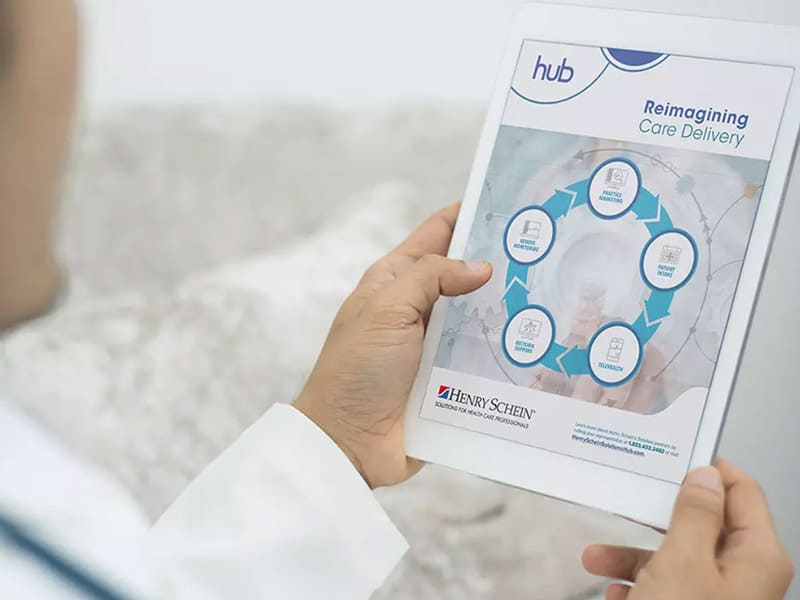Population Health: Have You Reached the “Tipping Point”?
Ensure your system can achieve a critical mass of useful and well-governed data.

Population Health platforms and programs can have a big impact but are difficult to get off the ground. HIEs, CINs, ACOs, AMHs can provide enormous value to providers and the patients they serve, but that value doesn’t just happen overnight. Without good data, even the most thought out value-based care strategy or the most powerful technology on the planet will fail to deliver its promise. It all starts with the data. In this blog, we’ll contemplate intuitive ways to turn up the dial on:
- Obtaining a critical mass of data to feed downstream services and analytics
- Ensuring the data you have is rich and useful
- Protecting yourself from sensitive data
A New Way to Access Data in Ambulatory and Acute EMRs and Practice Management Systems
Population Health platforms have a short period of time to spool up and offer value. The “tipping point” is a convergence of time and valuable outbound services. By this, I mean that consumers of your notifications, reports, and analytics understand the impact and come to you – not vice versa. You have something they need. The question is how do you get there? How can you get enough connections to feed your notification engine? How can you get the rural ambulatory clinics online and connected? What miracle has to happen to get the EMR vendors to work within your timeframes?
Let’s imagine for a moment your analytics environment is built and your shiny new provider portal is awaiting its first login. Your newly purchased care management platform is ready for business and your notifications engine is patiently idling…just waiting to inform the masses of patient transitions into acute care settings. These are all the right tools to manage cohorts of patients and the population at large but these tools are useless without data.
To offer value to your users, your tools and services need data… and a lot of it. You need to touch every ambulatory and acute EMR in your network. And to reach a critical mass of data, you have to have the ability to extract it from dozens of different EMRs and practice management systems. But you already know what’s going to happen…the EMR vendors need to be paid. And once paid, you will have to wait in line. And even then…you get what they want to send, not necessarily what you need.
Traditional EHR integration means using the “back door” into systems. Whether old school HL7, CCDs, CCDAs, FHIR, etc. these types of integration methods use documents and constructs that depend on a backend interface and layers of technologies and vendors that support them. The end result is it’s super difficult to actually get to the data you need.
The good news is it doesn’t have to be so hard. There is another way – another interface and it’s been right in front of us the entire time. The User Interface. It is the pathway to unlocking the data you’ve never been able to get to, work around troublesome vendors, and rev up your connection velocity by short circuiting traditional integration timelines. Think about that while I continue…
Ensuring Data Quality Regardless of EMR or Meaningful Use Standard Interpretation
When it comes to data – value wins over volume, hands down. So now that we see a way to increase connection velocity and open the spigots of data… what’s next?
One of the hidden challenges of traditional integration is the variance of data quality. Despite the influence of Meaningful Use, most EMRs take some interesting liberties with their interpretations of the standards. Couple this with human habit (i.e. “I’m not going to use this system the way you think I am”) and layers of technology between your Population Health platform and the data source and you get varying if not questionable data quality.
Sure, some vendors will absolutely nail your data target. Some of the time, the data will be where you expect it to be. But with over 500 EMR vendors in the marketplace (over 200 in the great state of North Carolina alone), how can you ever hope to keep up? The reality is you can’t unless you have a lot of time and an unlimited amount of budget.
Hang in there. The data is there and you can get it…you’re just temporarily stuck because you’re going about trying to access it via traditional integration methods. Can you think of one place where you can literally see the data you need? I can…it’s the User Interface. And by using it, you avoid the layers of interpretation, workflow, and integration technology that often make the data you need hard to find. Other industries with the highest security protocols have leveraged this method to address data quality for decades.
One last thought.
Managing Sensitive Data – 42 CFR Part 2, Family Planning, Genetic Testing … and More
Let’s imagine you have a lot of good data. But if you haven’t been careful, you will also have sensitive if not prohibited data as well. Have you considered family planning for minors? Genetic testing? HIV/AIDS or other sensitive conditions? 42 CFR Part 2 data?
Perhaps the greatest challenge for Population Health platform providers is data governance. Once data crosses the threshold, it’s your data now. Once it hits the web server it’s in a log. Once it gets queued up within an integration engine, the data is very likely physically in a database table, which means it’s on its way to redo logs, backups, etc. The bottom line is that you cannot afford for sensitive data to land. But how can you do that when the EMR vendors control the flow of information? You know the rules…how can you enforce them before the data crosses your threshold?
I bet you can “see” the answer already. The User Interface gives you control over the data you extract and just as importantly, the data you DO NOT extract. And, by intervening before the data lands in your Population Health platform, you avoid the complications associated with finding it, isolating it, removing it, and letting patients know the exposure happened.
Unlocking Data That Traditional Integrations Simply Can’t Deliver
The User Interface is one of many vectors through which to feed a Population Health platform. And though others may be viable some of the time, no solution is viable all of the time. How can you maintain velocity and volume of data in a complicated vendor environment? How can you get to data traditional integration strategies simply can’t deliver? How can you avoid the pitfalls of sensitive data and preventing problems before they happen?
For more information about how Smartlink Health Solutions is solving data access, quality and sensitivity challenges, contact us at 877-502-3067.
Mark Dunnagan VP Health Informatics
Table of Contents



